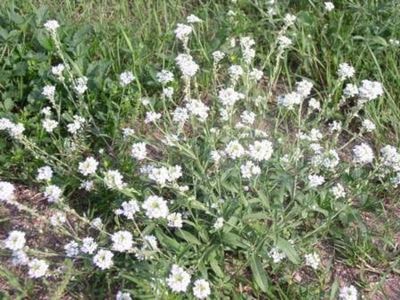A local organization has received a cash injection to help them continue the battle against invasive species in the region.
The East Kootenay Invasive Plant Council (EKIPC) received monies in the amount of $190,000 from the provincial government, part of a province-wide grant of $1.6 million announced last week in Victoria by the Ministry of Forests, Lands and Natural Resource Operations (FLNRO).
The 29 grants are being given to local governments, regional invasive species committees and the Invasive Species Council of B.C. to assist their activities and support the objectives of the provincial Invasive Plant Program.
The East Kootenay Invasive Plant Council (EKIPC) is a non-profit society that was formed in 2008 and is made up of a variety of stakeholders to fight invasive plants across the region. This year its major funding partners are FLNRO and the Ministry of Transportation.
EKIPC's efforts are gearing up as the spring turns into summer and weed season nears.
"We're hiring an outreach crew — so two staff will be hitting the East Kootenay for June, July and August to raise awareness on the impacts of aquatic and terrestrial invasive species," EKIPC Program Manager Todd Larson said. "They'll be at public events, farmers' markets, boat launches, things like that."
Invasive species are those that have been introduced into B.C. from other areas. They displace native vegetation and can cause considerable economic and environmental damage, and some pose a health risk to people. Invasive plants may disrupt natural ecosystems, reduce biodiversity, increase soil erosion, alter soil chemistry and adversely affect commercial crops.
EKIPC has recently widened its scope to include Aquatic Invasive Species (AIS) in its management activities. AIS may include invertebrates, fish and plants. There is much discussion recently, for example, about the threat of zebra mussels and quagga muscles to B.C. waters.
"We definitely want to prevent mussels from being introduced to this area," Larson said. "We've got a boatwash station that we can use to decontaminate any infested boats. We'll also be monitoring a lot of the waterways to see what's here now.
"So far there seems to be a bit of a buffer around B.C. — we want to keep it that way.
"With aquatic invasives, once they're in the water system they're very difficult to get rid of, if not impossible."
Some of the most intrusive plants in the East Kootenay and B.C. are marsh plume thistle, European common reed, garlic mustard, knotweed, and Spartina. Hoary Alyssum grows in East Kootenay pastures but is toxic to livestock.
Other targeted species include orange and yellow (non-native) hawkweeds, giant hogweed, blueweed, common tansy, tansy ragwort, hoary alyssum, field scabious, leafy spurge, purple loosestrife, yellow flag iris, Himalayan balsam and Scotch broom.
Larson said if members of the public come across an invasive species in their travels or hikes, they can contact EKIPC (ekipc.com), or get a smartphone app called "Report a Weed," which helps you identify the species and GPS its location. EKIPC can then confirm the location and add it to its database.
